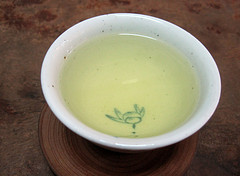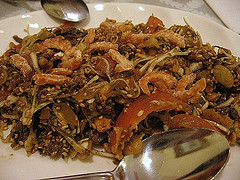
You may be very familiar with teas or you may be just starting your journey into exploring the delightfully fragranced and flavored teas that are available. Either way, chances are that once you have sampled some of the different organic loose teas that are now readily available worldwide you will never turn back!
My Introduction To Tea

In my home, when young, my parents and sisters loved their cup of tea–as they do to this day. Being dedicated tea drinkers they refused to make their tea from teabags but instead bought Lipton tea (made from broken leaves, not whole leaves). Their tea ceremony began by pouring hot water into the small, well used teapot in order to ‘heat up the pot first.” Next several teaspoons of tea were tossed into the pot and boiling water poured over. It sat for several minutes and was then poured into cups–not mugs. Everyone in my family had their tea with milk. Sugar was an option, depending on who was dieting at the time! Long gossipy conversations usually ensued, especially when the aunts were visiting. That was the extent of my knowledge about tea. I drank coffee instead.
Learning About Asian Loose Leaf Teas
Upon moving to South East Asia, suddenly my knowledge of tea was expanded. I noticed that men, not women as was traditional in my home, prepared the tea. It was brewed in tiny, rotund pots and served in small cups without handles. You never added milk or sugar!

In Myanmar, in a northern city, Mandalay, I was served tea leaf salad–apparently a rather famous dish made with fermented green tea leaves and other additives. I was surprised at how good it actually tasted. So, there was more to tea than I had originally thought.
It wasn’t until I went to live in Taiwan, however, that my tea education really began. My husband became fascinated with the whole concept of Cha Dao, or the ‘way of tea’. He learned about tea from various tea masters, participated in tea ceremonies and ended up drinking it frequently throughout the day. In Taiwan, oolong tea (or wulong tea, as it is also known as) is usually served. He has become so enthused with tea that he has started his own tea export company–it looks like tea has really become a part of my life!
But What Is All The Fuss About Organic Loose Leaf Teas
Here is where I get to explain why organic loose teas are far superior to tea made from broken leaves, or worse yet tea brewed from teabags made from tea fannings or dust.
We all know why organic is good right? Organic tea is grown without any pesticides or chemicals. It is simply much healthier to eat organic food of all kind than to eat food from animals that have been injected with hormones or crops that have been sprayed with insecticides and other chemicals. Following the same reasoning, drinking organic tea is a more healthy choice.
If you want to really taste a tea–just as you would taste a fine wine–you want to try loose leaf tea. The flavor is richer, there are more health benefits gained from drinking tea made from loose leaves and you will able to sample the true taste of the tea as it was meant to taste.
Aside from that, it is also a lot of fun to watch loose leaf tea brewing. The tea itself is dried yet when you pour water on top of it, the leaves gradually unfurl in a very beautiful and impressive manner. Try making a pot of blooming tea–you’ll be thrilled with what you see as it is guaranteed to impress.
Another reason for choosing loose leaf tea is that you can reuse the tea leaves several times over, up to around three times. How nifty is that? The flavor gradually lessens the more cups of tea are brewed with the same tea leaves but even after several cups you can still experience the unique taste of the particular tea you are drinking.
My Favorite Loose Leaf Teas
Everyone has their own favorites when it comes to tea. My husband is a great fan of GABA tea (more on that in another post). I prefer oolong tea to green tea, mainly I think because that is what I was first introduced to. Green tea, to me, tastes a bit–well–green and leafy.
Some of my favorites at the moment include JinXuan Oolong, Osmanthus oolong and Jasmine oolong. Of course, there are so many different oolong teas that it is difficult to choose only one or two–and my preferences also tend to keep switching from one tea to the other.
If you are new to drinking oolong tea I would definitely recommend the JinXuan Oolong which is also known as milky oolong tea. It really tastes great and has a slight hint of a milk tea flavor which makes it a perfect choice in many ways for someone transitioning from drinking black tea and milk to oolong tea.
The Red Jade tea is one of the more expensive black teas sold as loose leaf tea but it is, not so surprisingly, becoming very popular amongst tea lovers.
If you love teas with a flowery taste, you would probably like the Jasmine oolong and Jasmine green tea choices. Osmanthus oolong is another great choice as the blend of the Osmanthus flowers with the oolong tea is a perfect combination–giving off a beautiful, almost heady apricot aroma with a delicious taste.
More On Loose Leaf Teas
I will be doing specific updates on each of the teas mentioned above, as well as some other teas that I am able to supply. I hope you enjoyed reading about my personal ‘tea journey’ and my favourites. I’d love to hear about yours too! Also, if anyone has any specific teas; herbal, green or oolong that you would like me to review and post more information on please just get in touch and let me know.